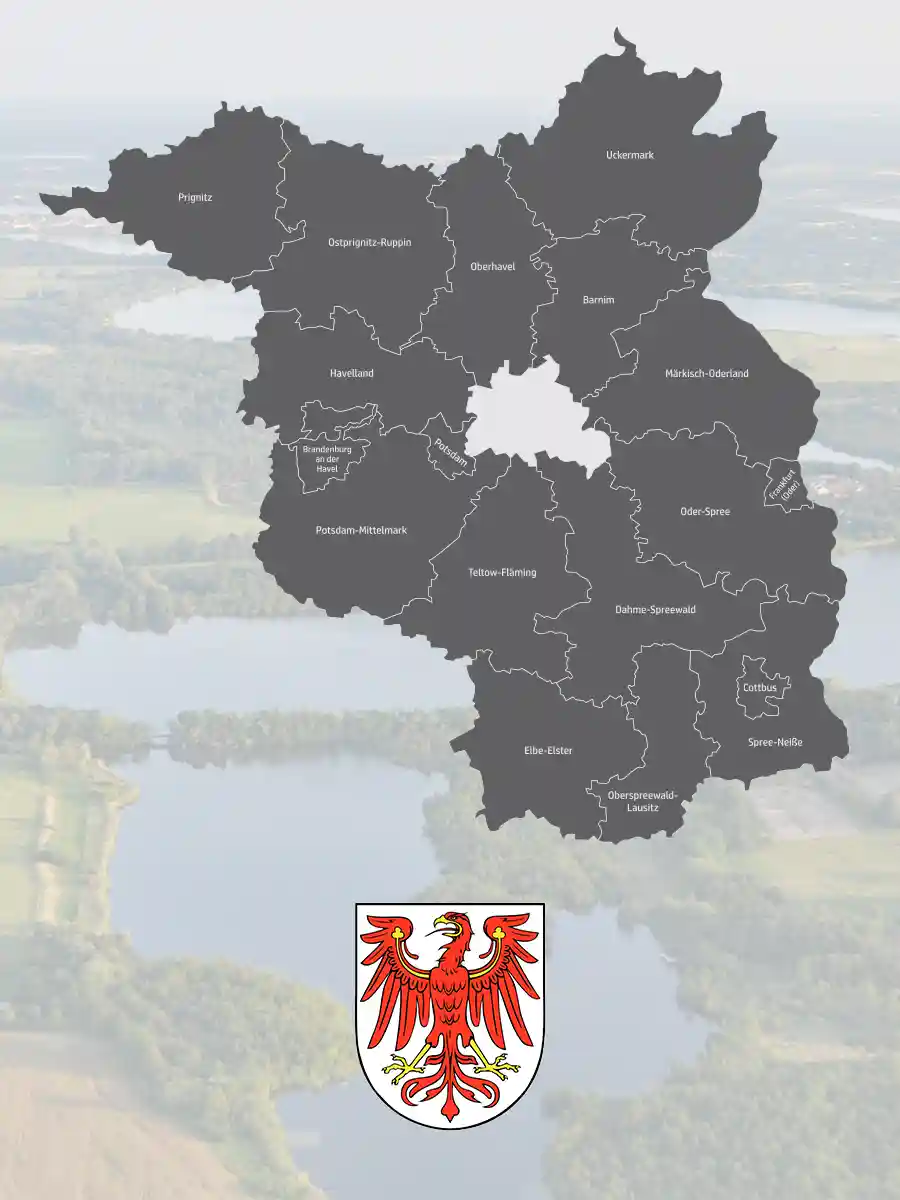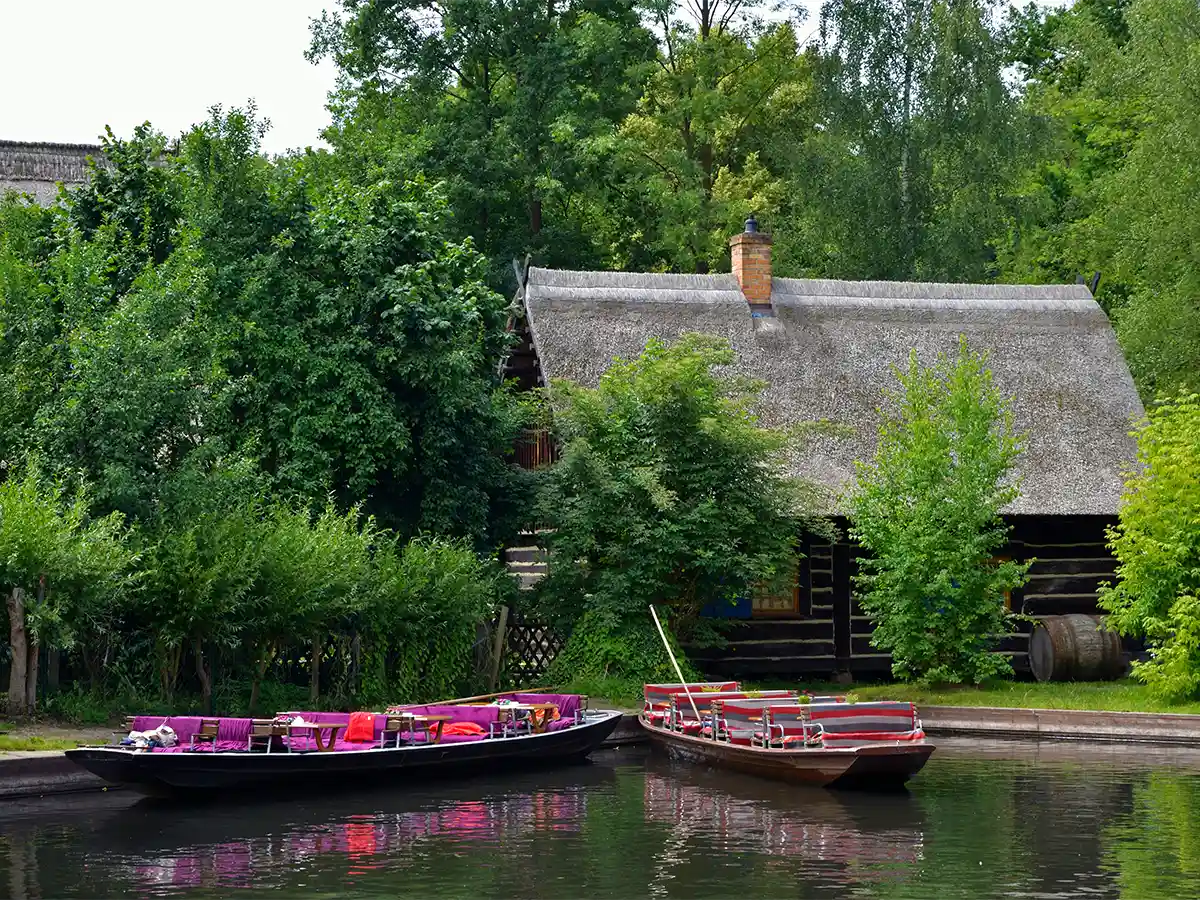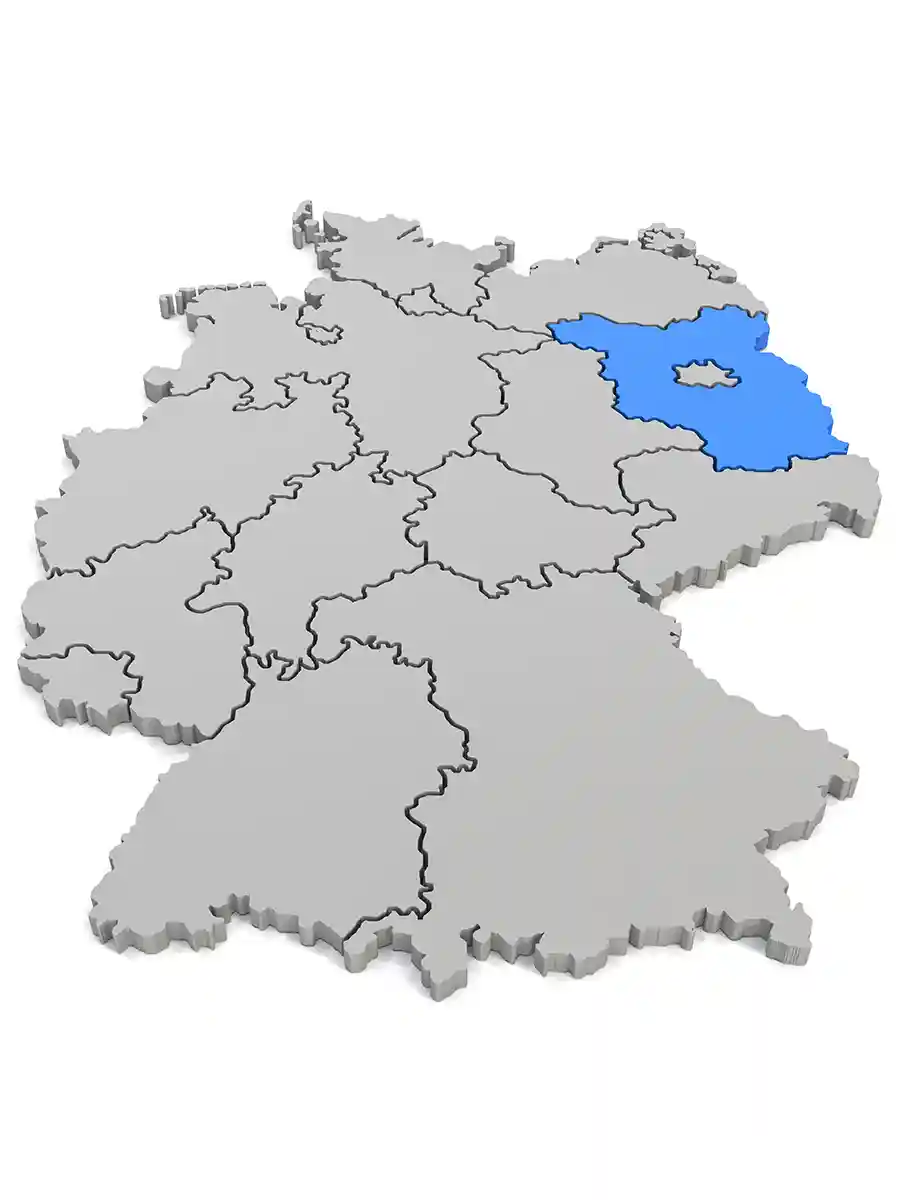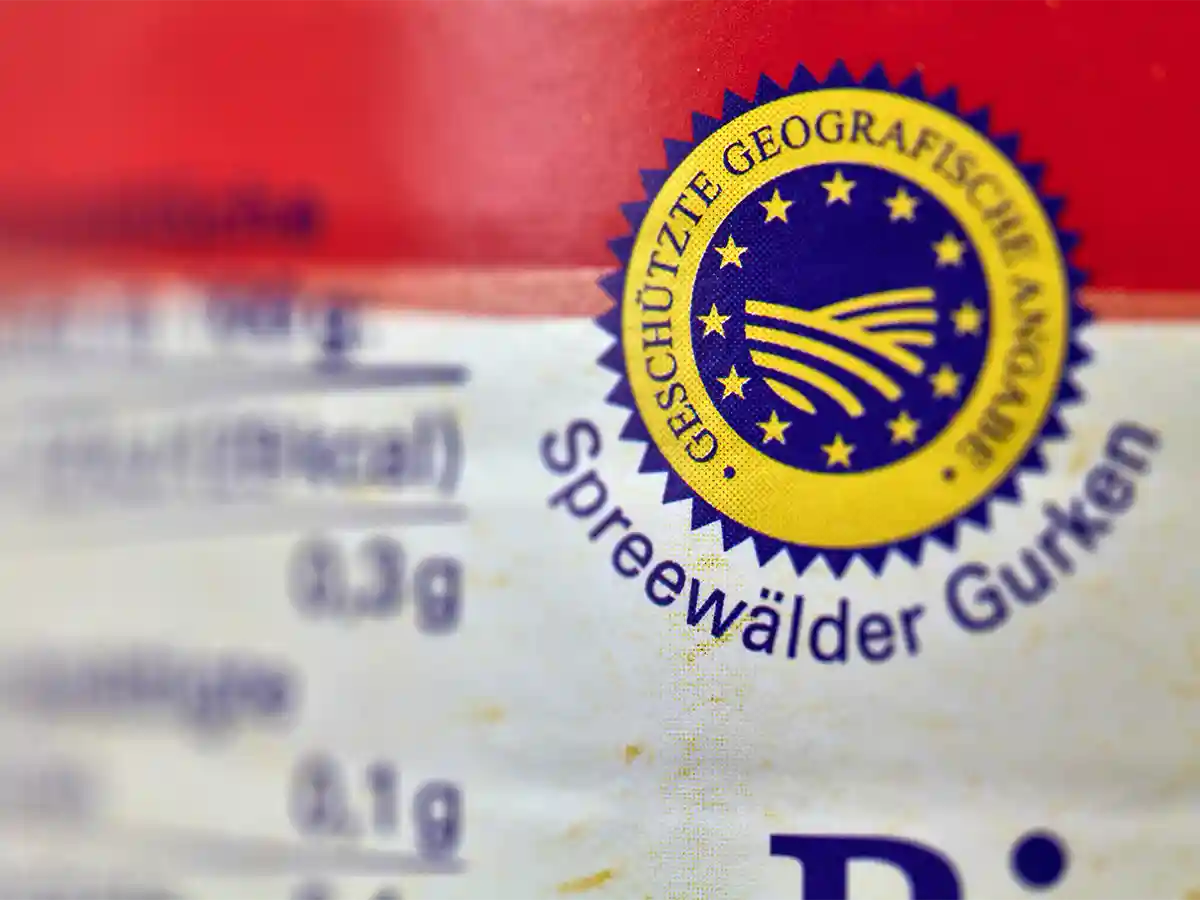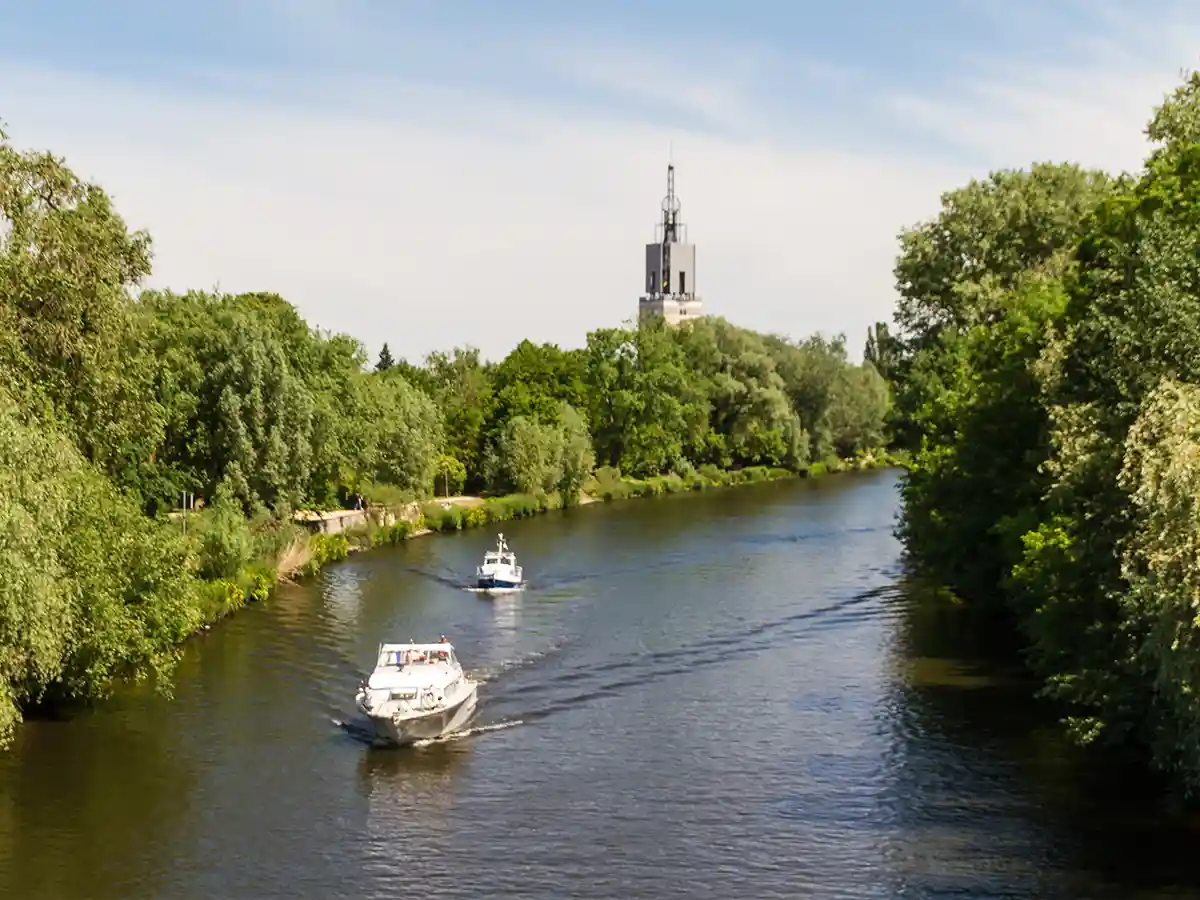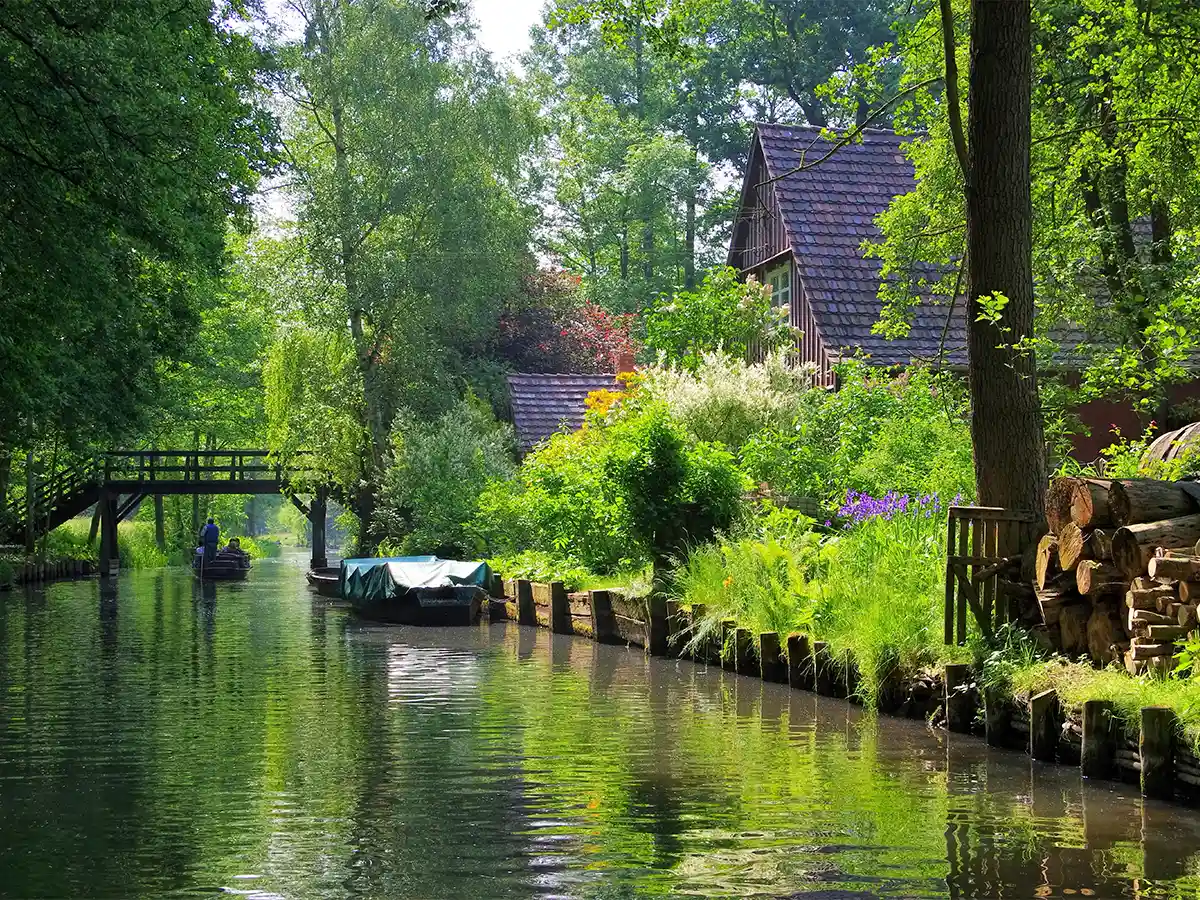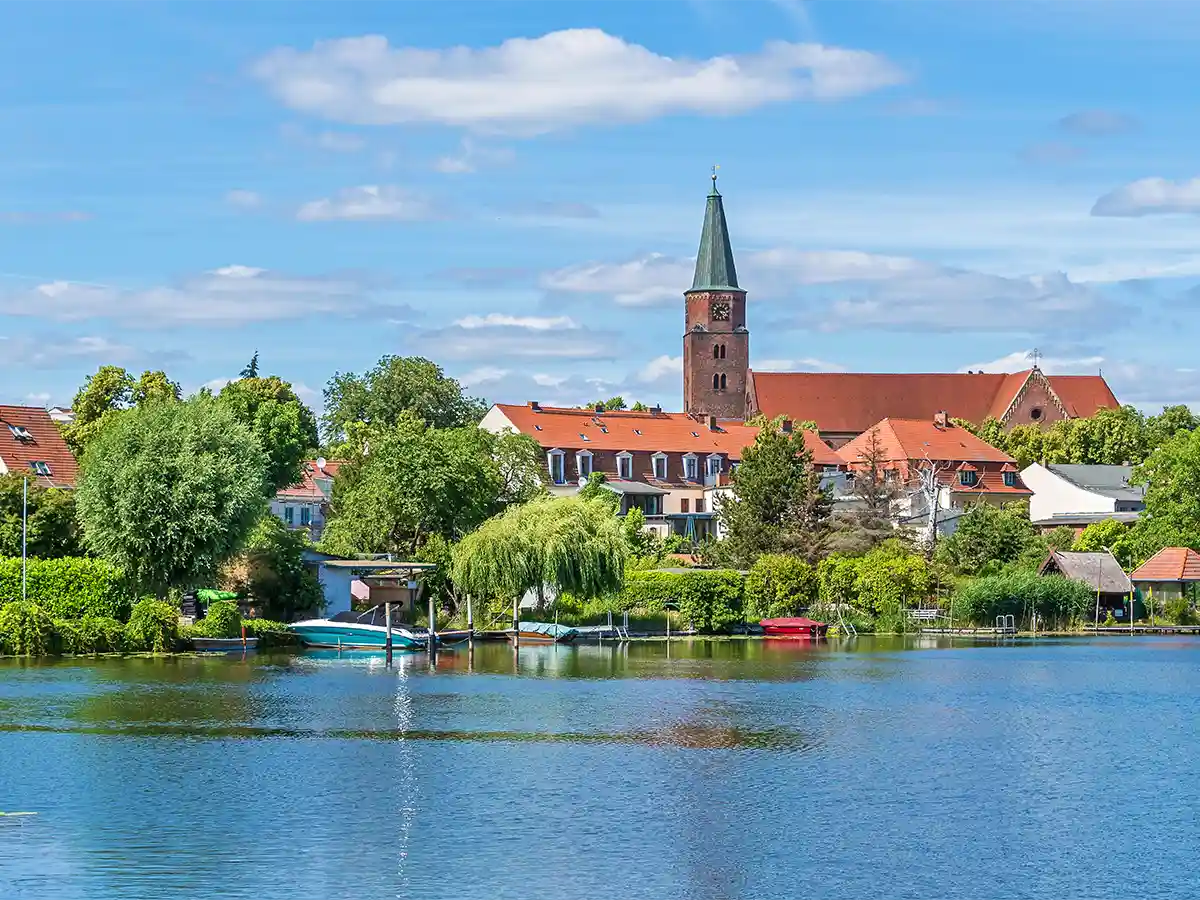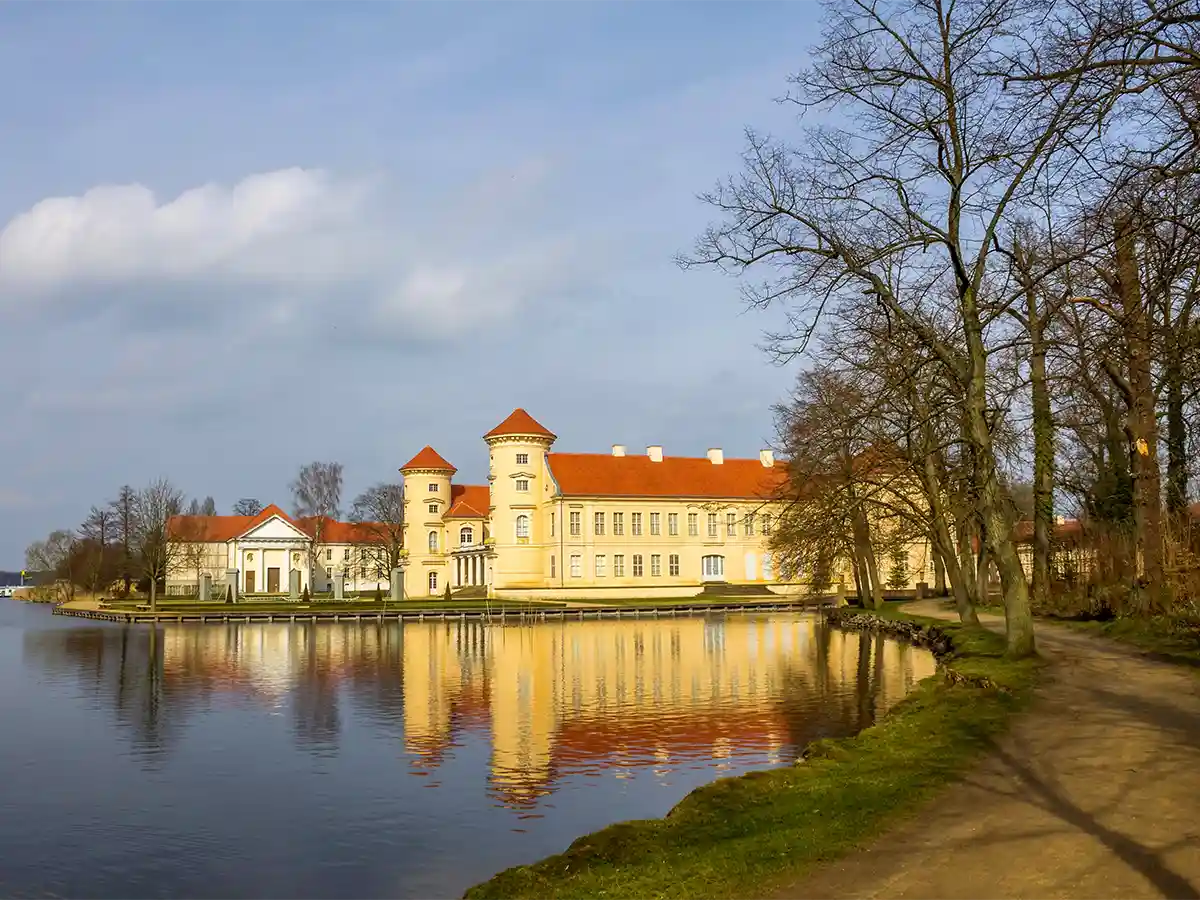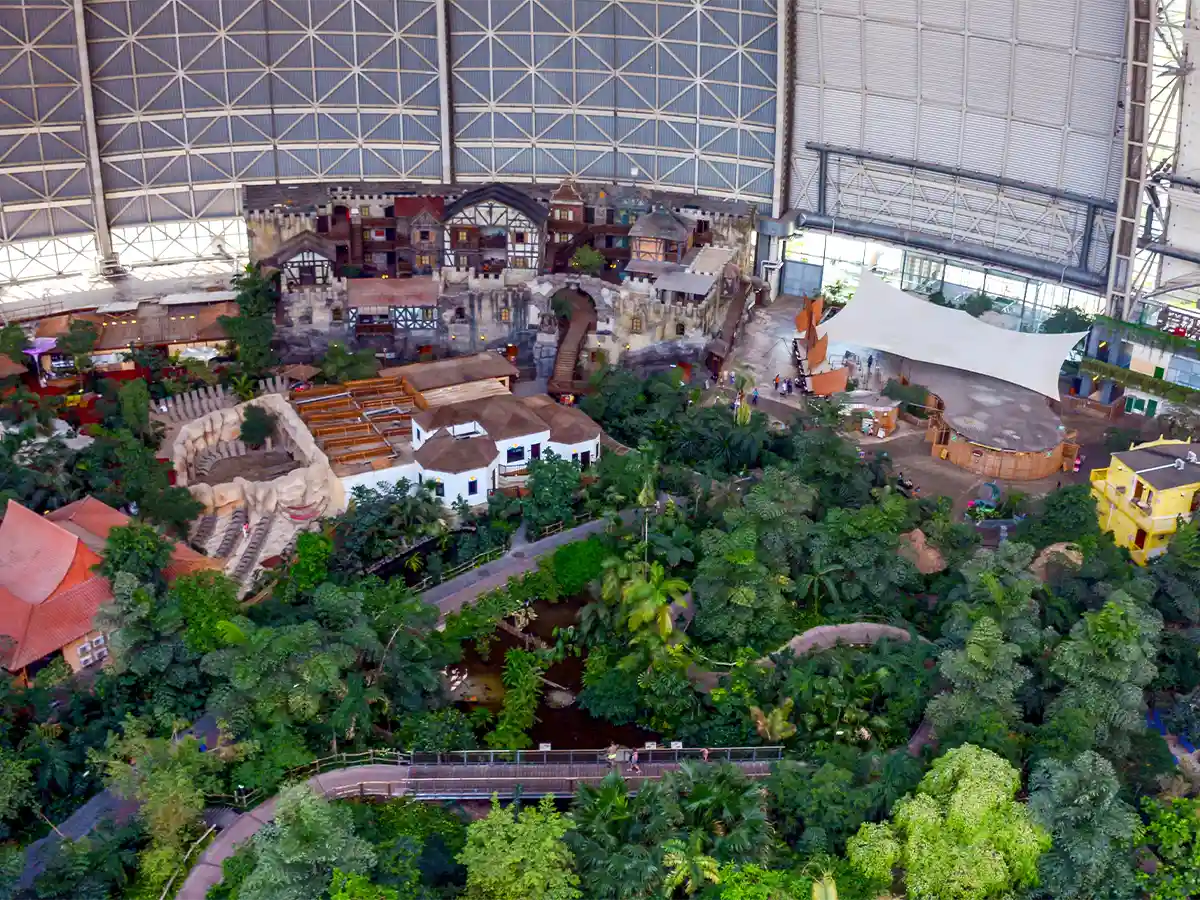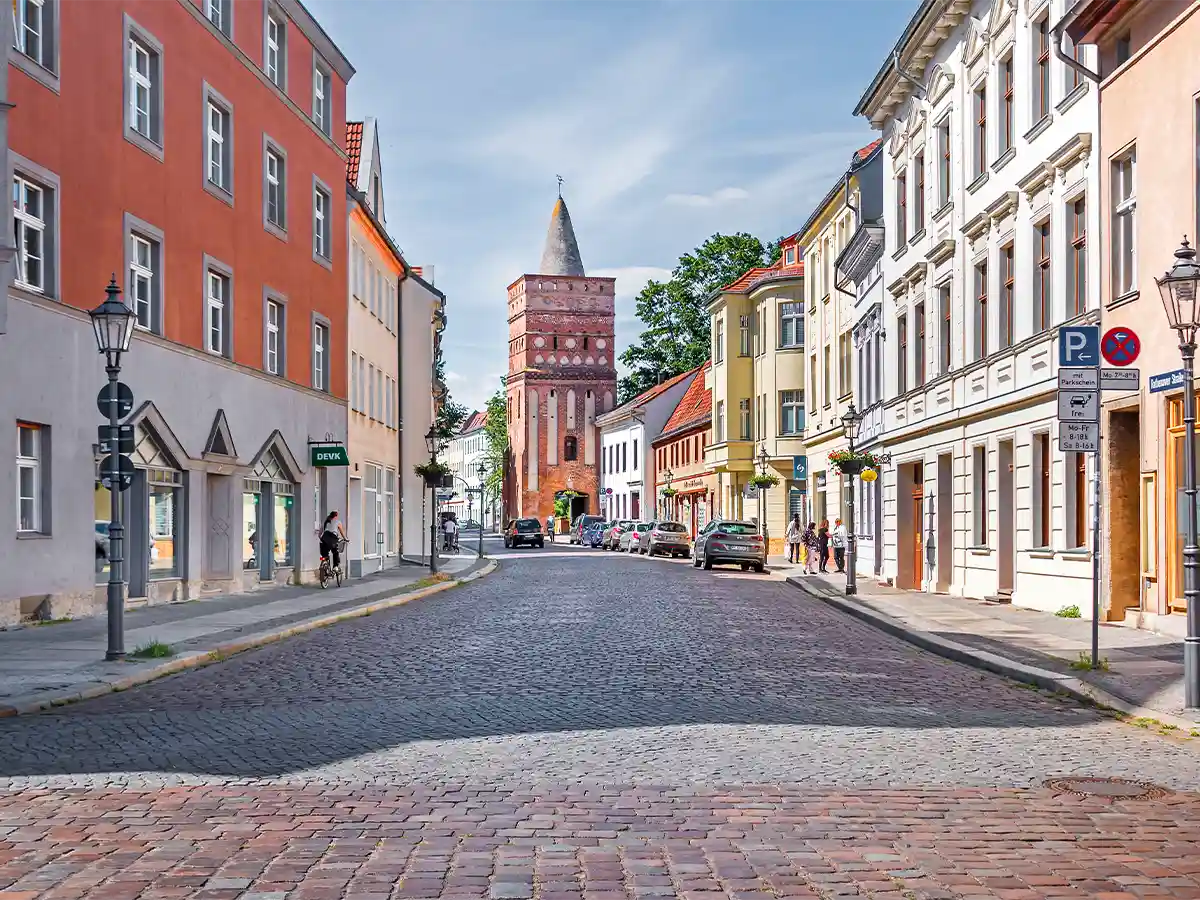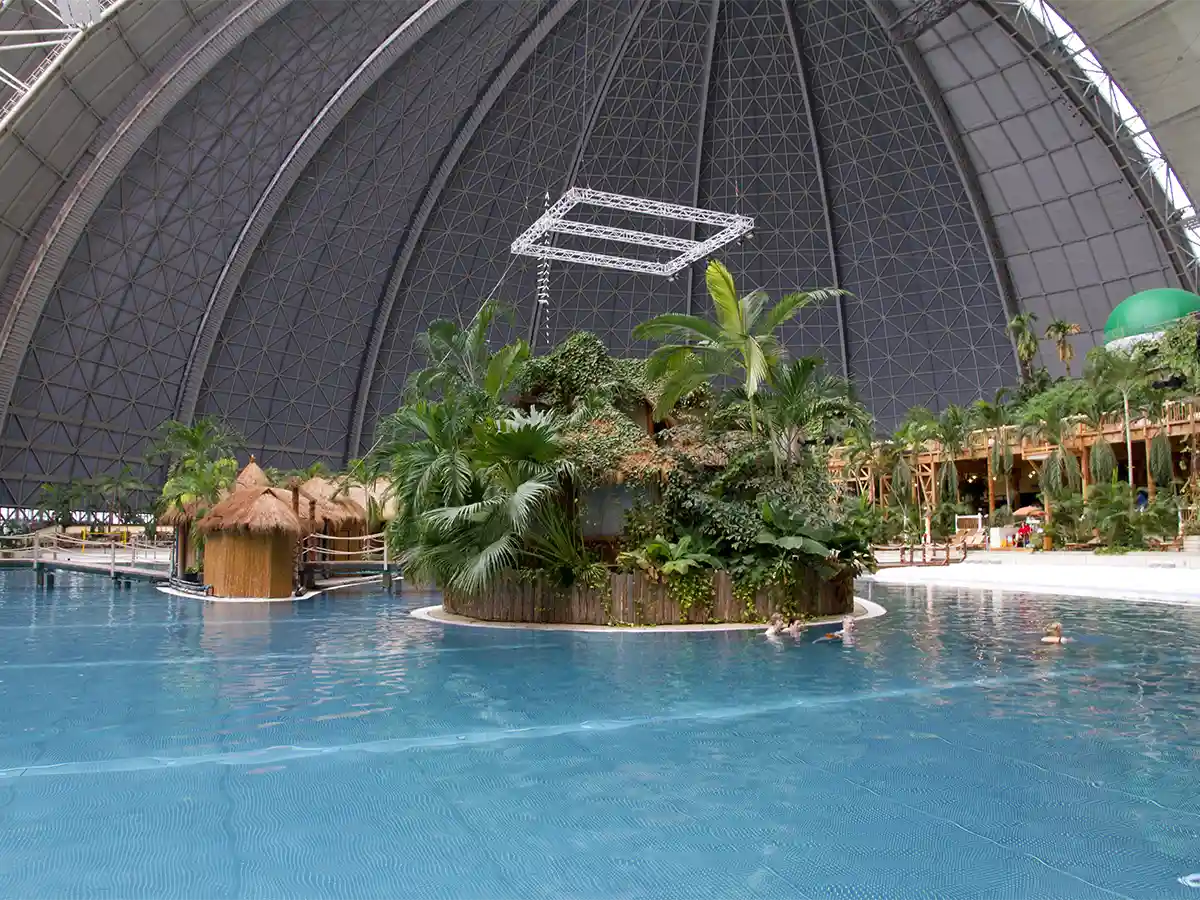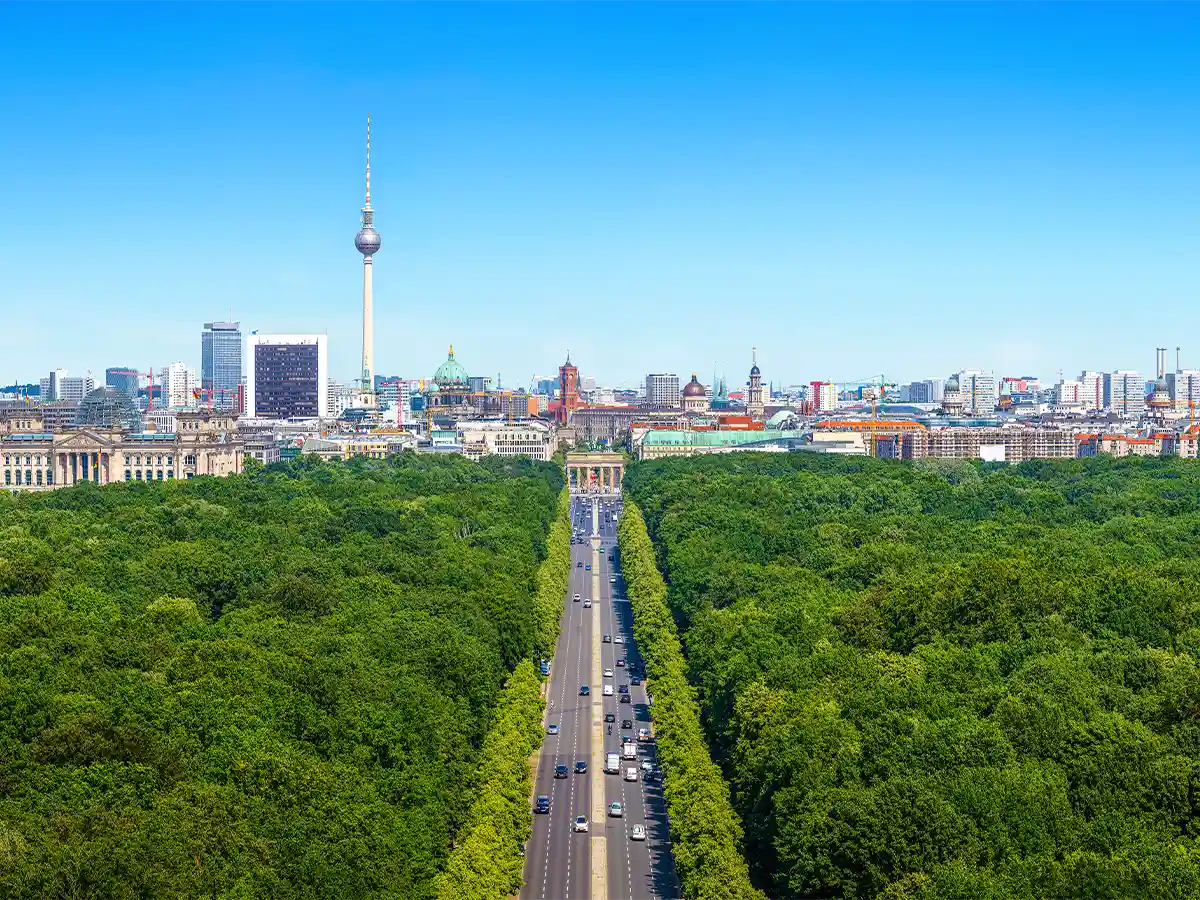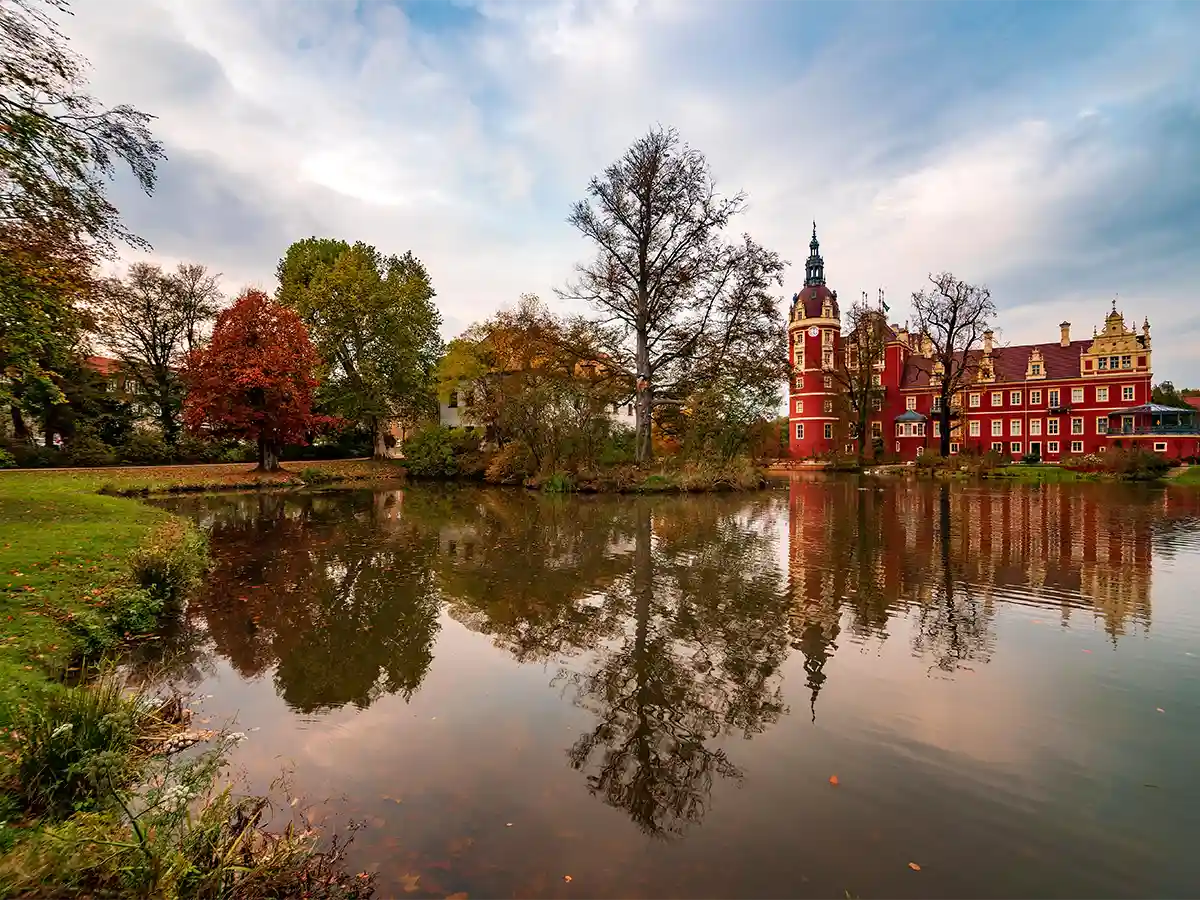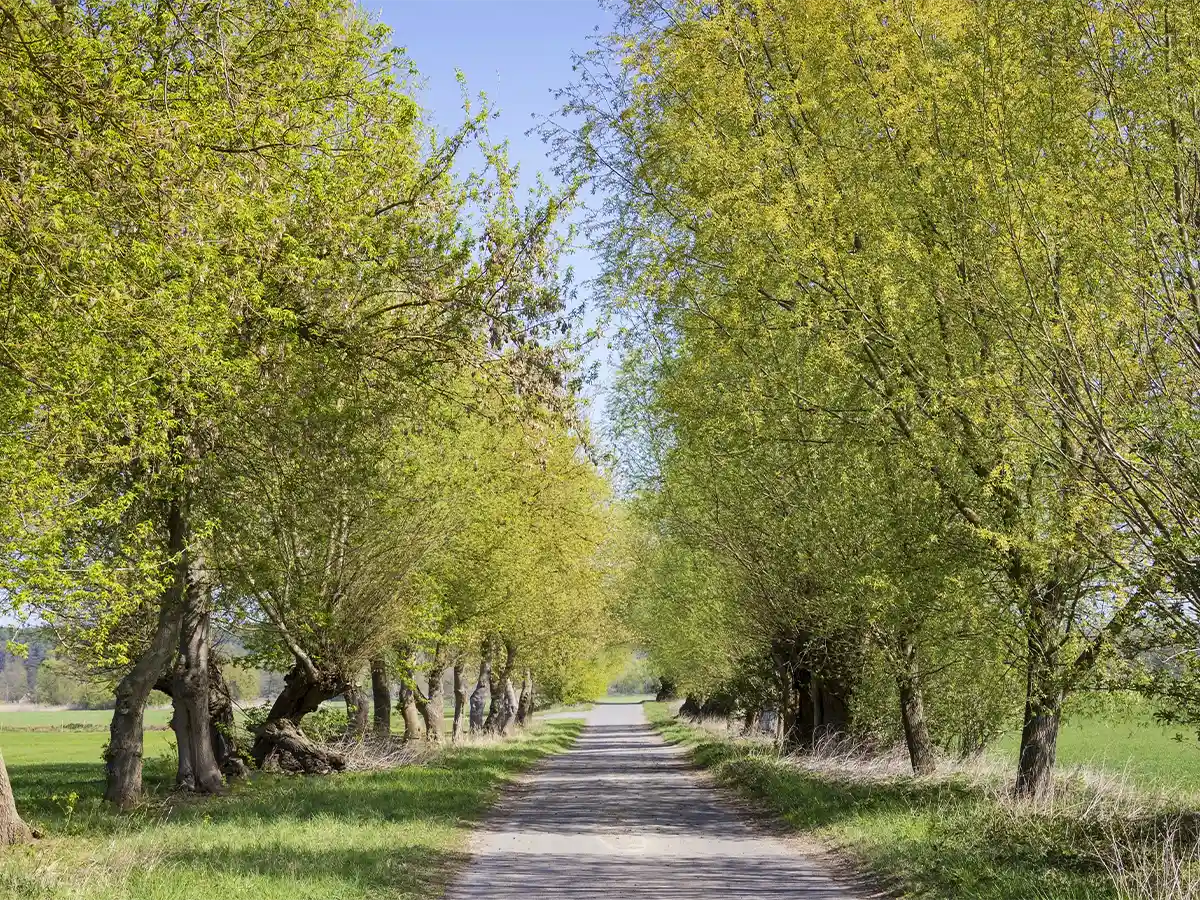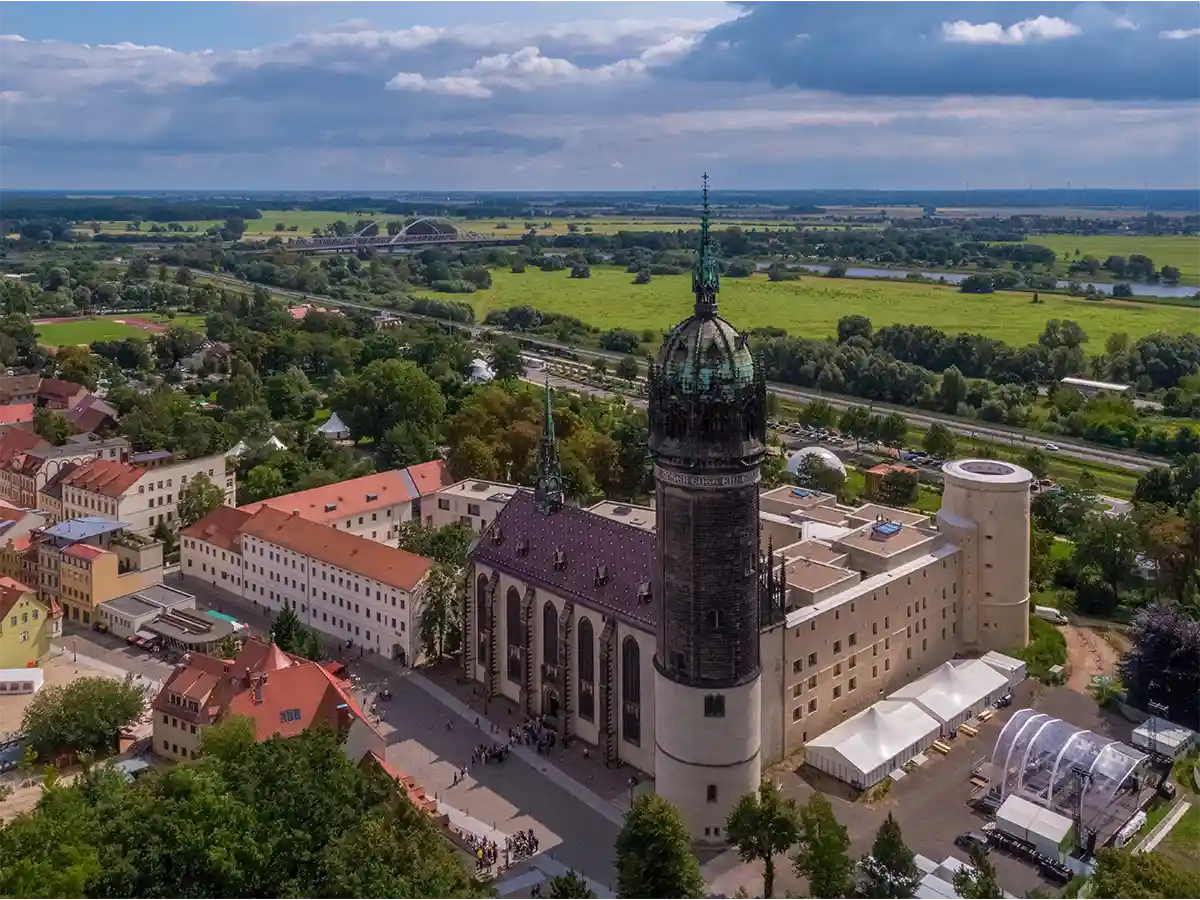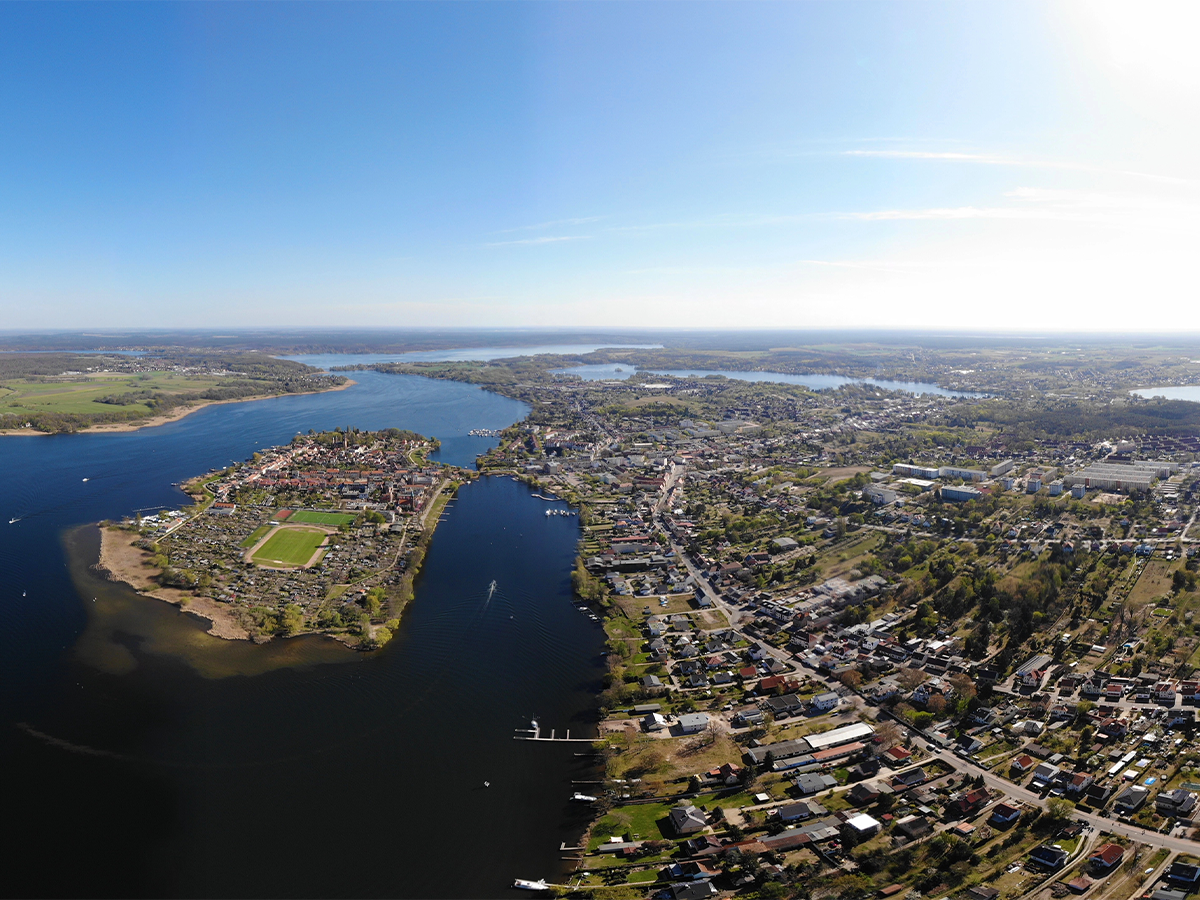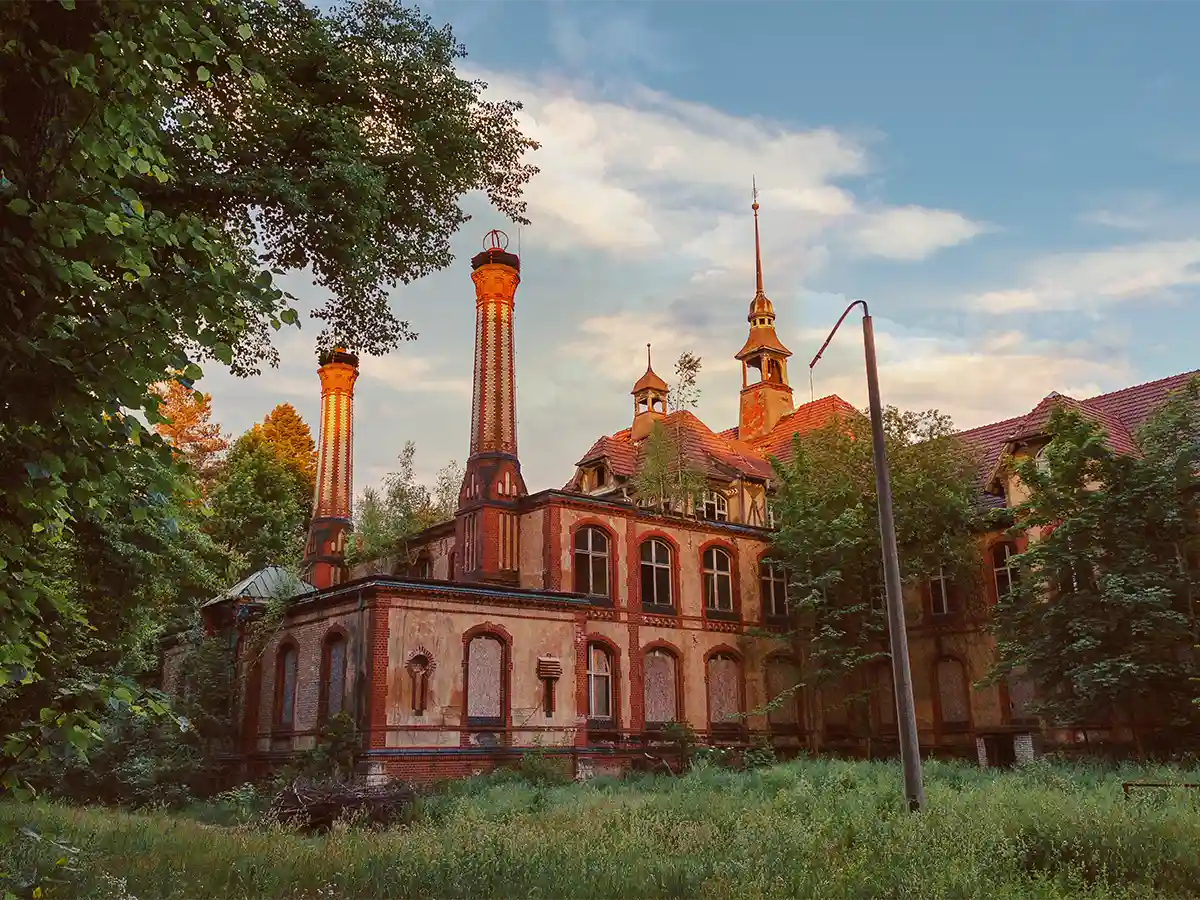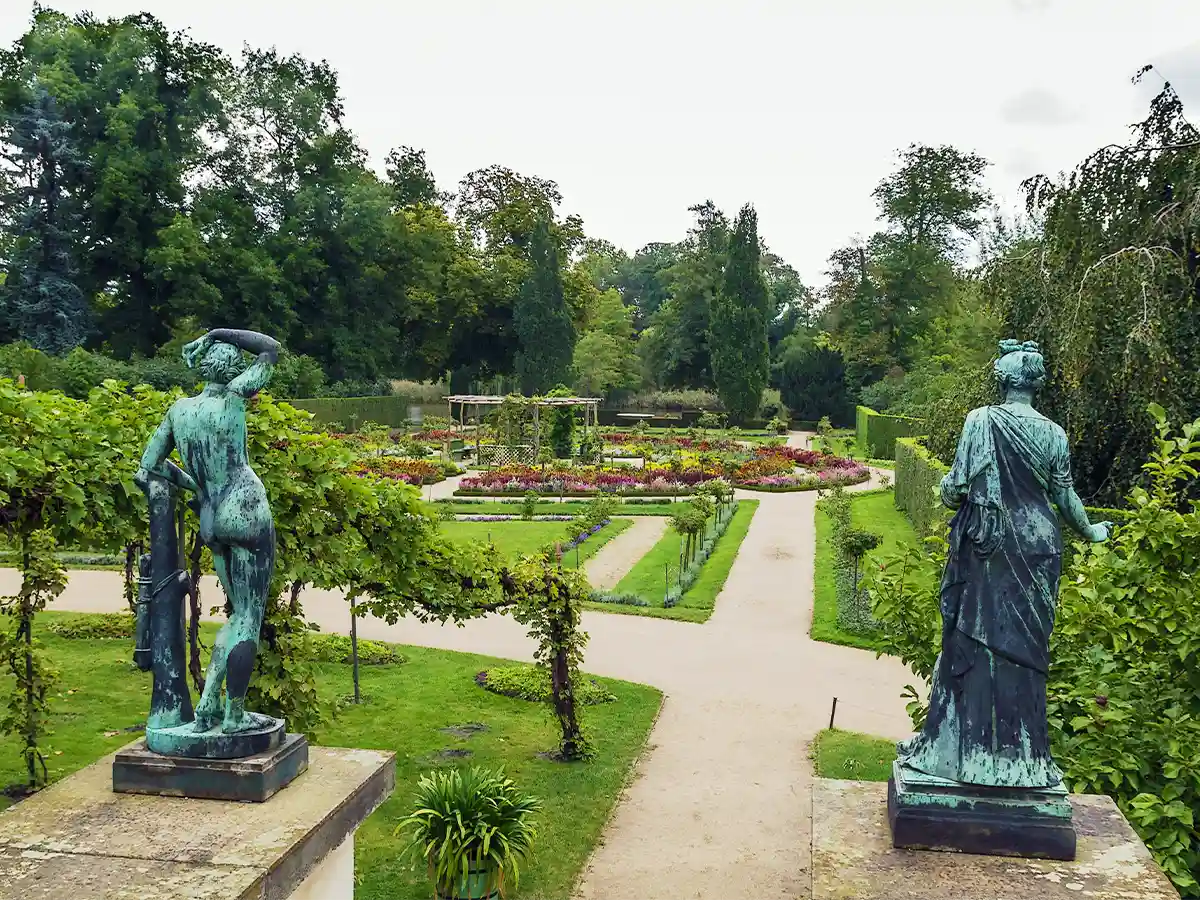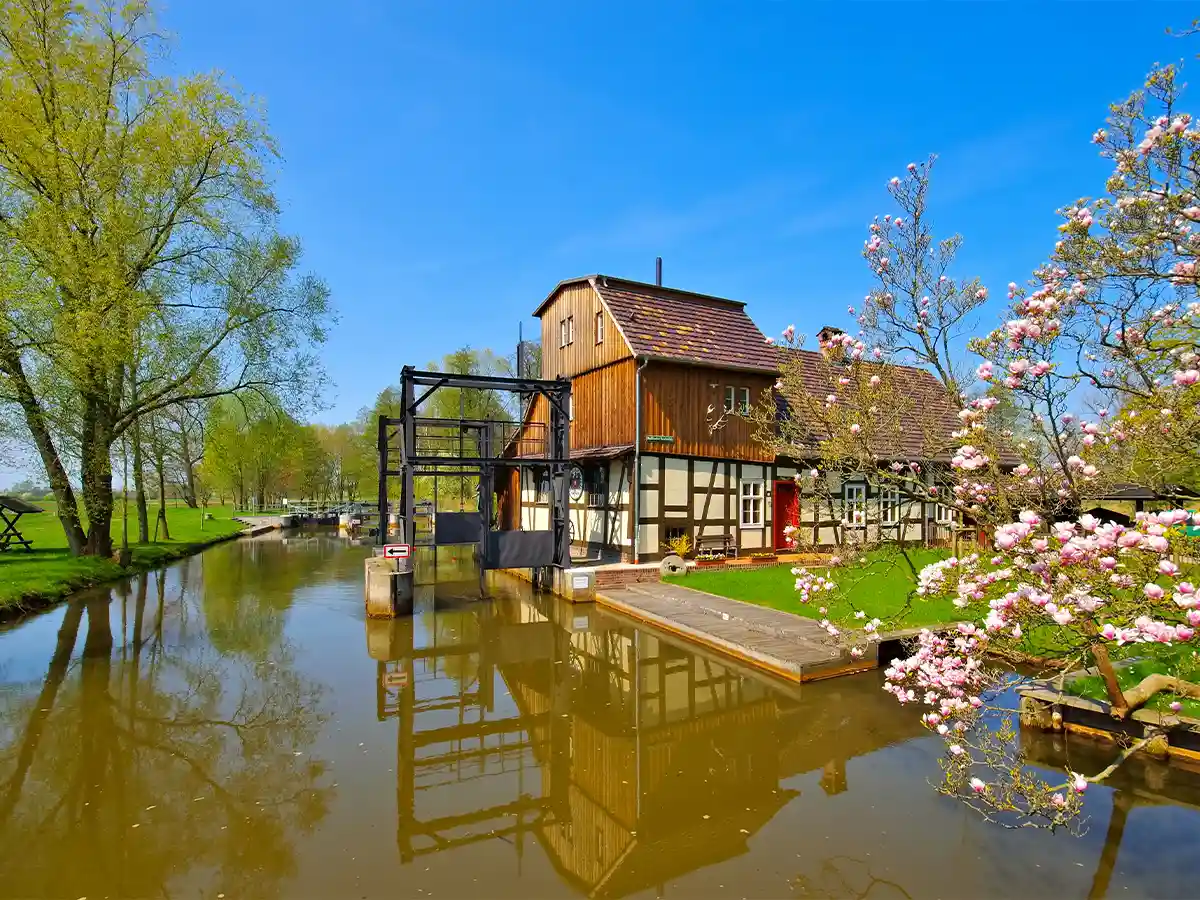Save up to 50% on all digital items with our Last Minute Christmas Sale on now!
- Home
- By Region
- Brandenburg
- Discover Brandenburg
Discover Brandenburg: Your Ultimate Travel Guide to Germany’s Nature Paradise
By: Eran Fulson | Last Updated: April 28, 2025
Welcome to the heart of eastern Germany’s nature paradise, the federal state of Brandenburg. We'll explore forests, medieval towns, and its amazing biosphere reserves. Whether you’re planning a weekend getaway or looking for a quiet base near Berlin, my Brandenburg travel guide might just make this region your new favorite escape.
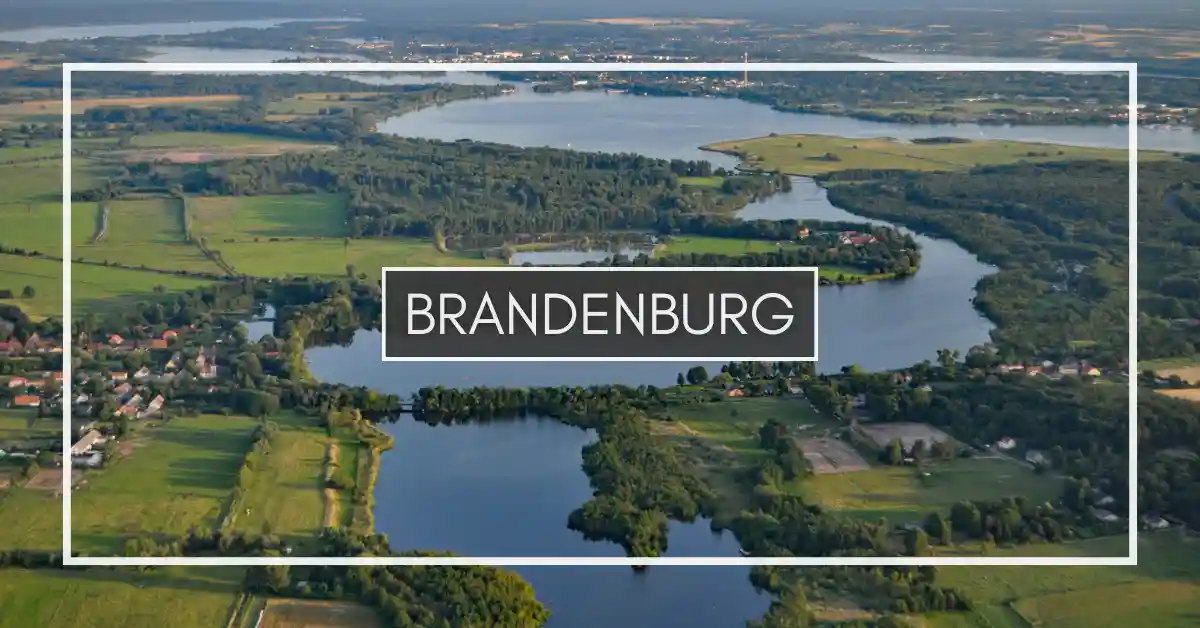
Key Takeaways
- Brandenburg is a scenic state in northeastern Germany that surrounds Berlin, known for lakes, forests, and cultural heritage.
- Top places to visit include Potsdam, Spreewald, Rheinsberg, and Tropical Islands Resort.
- Ideal for nature lovers, cyclists, history buffs, and Berlin-based day-trippers.
- Accessible by train, car, or bike. With the Brandenburg-Berlin ticket offering easy regional travel.
- Best visited in spring or summer, but worth exploring year-round for its quiet charm and rich traditions.
- Also, pickles.
On this page:
Fast Facts about Brandenburg
- State Capital: Potsdam
- Population: ~2.5 million
- Area: 29,654 km² (11,449 mi²), Germany's 5th-largest state
- Location: Northeastern Germany, surrounds Berlin
- Known For: Spreewald canals, UNESCO palaces, lakes, forests, Sorbian culture
- Fun Fact: Brandenburg has over 3,000 lakes
- Vibe: Laid-back, nature-forward, historically rich
- Best For: Nature lovers, history fans, peace seekers, day-trippers from Berlin
A Brief History of Brandenburg
Brandenburg’s roots stretch back to the 8th century, when Slavic tribes settled the area. But things really got going in 1157, when Albert the Bear (a solid medieval name) became Margrave of Brandenburg.
The region became part of the Holy Roman Empire, unified with Prussia in 1618, and eventually led to the powerful Kingdom of Prussia. After WWII, Brandenburg was absorbed into East Germany, then restored as one of Germany's 16 federal states after reunification in 1990.
Today, it’s a state that quietly balances its legacy of kings and conflict with renewable energy, cultural revival, and, most importantly, canoes.
Where is Brandenburg?
Brandenburg surrounds Berlin like a leafy, history-laden doughnut. Located in northeastern Germany, it borders Poland to the east and is known for:
- Vast forests and scenic plains shaped by the Ice Age
- Rivers like the Havel, Spree, Oder, and Neiße
- Over 3,000 lakes (not a typo) including Scharmützelsee (aka the “Brandenburg Sea”)
Brandenburg is perfect for slow travel, bikepacking, paddling, or sitting quietly by a lake with a good beer and even better silence.
Culture in Brandenburg
Brandenburg doesn’t shout about its culture, it quietly lives it. While the rest of Germany might dazzle with Oktoberfest, alpine scenery, or cutting-edge urban trends, Brandenburg prefers pickles over pretzels, canals over castles (it has castles too), and a good local brass band over a techno DJ any day.
This is a region that straddles the line between old Prussian legacy and Slavic heritage, where locals say “Ick” instead of “Ich,” and you’re more likely to stumble across a Sorbian costume parade than a Starbucks. It’s proudly rural, deeply regional, and refreshingly understated. It's the kind of place that still celebrates cabbage festivals and genuinely believes a small town’s pumpkin carving contest is newsworthy.
If you’re looking to experience a more traditional, earthy, and unfiltered version of German culture, Brandenburg is your place. No curated Instagram moments, just cozy villages, unfiltered dialects, and locals who genuinely love where they live (even if they pretend not to).
Sorbian Heritage
In the southeast, the Sorbs, a Slavic minority, keep their language and customs alive. Nowhere moreso than in the Spreewald. Expect bilingual signs, colorful costumes, and a serious commitment to pickled vegetables.
Festivals to Catch
- Potsdam Palace Night: Live music + baroque vibes in Sanssouci Park
- Cottbus Film Festival: Focused on Eastern European cinema
- Gurkenfest: Seasonal joy + regional food
- Christmas Markets: Especially magical in towns like Brandenburg an der Havel
Local Flavors
Known as Berlin’s Vegetable Garden, Brandenburg's regional foods are celebrated for their down-to-earth cooking.
- Knieperkohl: A hearty fermented cabbage and kale dish
- Plinsen: Fluffy sour-milk pancakes, tastes better than it sounds
- Fruit wines and beers: Underrated and local
- Spreewälder Gurken: Iconic pickles
Why Spreewälder Gurken Are a Big Deal (and Officially Protected)
Yes, the Spreewälder Gurken needs its own section.
Not all pickles are created equal, and Brandenburg has the literal paperwork to prove it. Since 1999, Spreewälder Gurken (those famous Spreewald cucumbers) have been officially protected under the EU’s Protected Geographical Indication (PGI) system.
In other words: if it doesn’t come from the Spreewald’s floodplain soils and maze of canals, and if it’s not made the old-fashioned way with dill, mustard seeds, horseradish, cherry leaves, and a few secret ingredients your Oma probably won't tell you, it’s not the real deal.
The Spreewald’s humid microclimate and sandy, nutrient-rich soil work together to create cucumbers with thinner skins and extra crunch. The PGI status doesn’t just protect the cucumbers; it protects the 20+ local family businesses still doing things the traditional way.
This ensures that when you bite into a Spreewälder Gurke, you're tasting an actual piece of Brandenburg heritage, not some factory-made knockoff with “Spreewald-style” slapped on the label.
In short: real Spreewälder Gurken = Brandenburg pride + pickle perfection.
Speak Like a Brandenburger
Impress the locals with a few regional phrases:
- “Ick hab keen Plan.” – I have no idea.
- “Det is jut.” – That’s good.
- “Na, allet jut?” – Hi / Everything good?
- “Keene Ahnung.” – No clue.
- “Det wird dufte.” – It’s going to be great.
Bonus: Pair any of these with a smile, and you’ll be golden.
Top 5 Places to Visit in Brandenburg
Potsdam
Yes, it’s technically part of Brandenburg. Potsdam is where Prussian royalty once strolled through manicured gardens pretending not to be stressed about Europe.
Head straight to Sanssouci Palace for peak Rococo drama, then swing by the Dutch Quarter for red-brick charm and strong coffee. Need a Cold War fix? Cecilienhof Palace is where Churchill, Truman, and Stalin tried to play nice. It’s 40 minutes from Berlin, which means it’s basically your royal backyard.
Spreewald
Think Venice, but with trees, cucumbers, and fewer gondolas. Spreewald is a biosphere reserve crisscrossed by tranquil canals. Hop into a punt boat (someone else does the paddling) or rent a kayak and get lost in the greenery.. in a good way.
Lübbenau is your launchpad for the adventure, and while you’re there, do not skip the Spreewälder Gurken. This place is the cucumber capital of Germany. Bonus: there’s a spa. Because even nature lovers need a good soak.
Brandenburg an der Havel
The state’s namesake is older than Berlin and about ten times less chaotic. The cathedral is impressive, the Havel River is perfect for lazy boat rides, and there’s a decent chance you’ll stumble upon a medieval fair complete with costumed sword-fighters and questionable mead.
The Industrial Museum is surprisingly cool. Especially if you’re into steel, steam, or things that make loud clanking noises.
Rheinsberg
Part lakeside resort, part musical throwback, Rheinsberg was Frederick the Great’s hideaway before he had to be, well, great. His palace is still standing and now moonlights as a concert venue and museum. Expect Rococo ceilings, garden strolls, and maybe a little existential reflection by Lake Grienericksee. Bring a book. Or a flute. No one’s judging.
Tropical Islands Resort
It’s a jungle... inside a hangar. Located in a former airship dome (because why not?), Tropical Islands has beaches, water slides, a fake rainforest, and rooms that look like you’re on a tropical honeymoon even if you’re just escaping February.
It’s kitschy, weird, and somehow incredibly fun. Day trip it from Berlin or go full holiday mode and stay the night in a safari tent under a pretend sky.
These aren’t just “the best Brandenburg destinations.” They’re proof that you don’t have to go far from Berlin to feel like you’ve landed somewhere entirely different. Even if those places sometimes come with palm trees. Albeit indoors.
When to Visit Brandenburg & How to Get Around
Best Time to Visit
- Spring (Mar–May): Wildflowers, mild weather, fewer crowds
- Summer (Jun–Aug): Peak time for lakes, hiking, canoeing
- Autumn (Sep–Nov): Foliage, harvest festivals, cozy town stays
- Winter (Dec–Feb): Christmas markets, fewer tourists, ice skating
Getting Around
- Train & Bus: Well connected. Use the Brandenburg-Berlin ticket for day travel in both regions.
- Car: Great for remote villages or lake hopping.
- Bike: Brandenburg is a cyclist’s dream, especially the Havel and Oder-Neiße trails.
Getting around is easy. Getting lost in the scenery? Inevitable.
Where to Stay in Brandenburg
You won’t find skyscraper hotels or rooftop infinity pools here (unless you count the rainforest dome at Tropical Islands). Brandenburg is where you go to slow down, breathe deeply, and maybe sleep next to a lake that still has frogs in it.
Here’s where to drop your bags:
For History & Architecture
- Potsdam: Stay in a boutique hotel or guesthouse near Sanssouci Park for easy access to palaces, museums, and historic streets. Bonus: you're 40 minutes from Berlin by train, so no one has to know you're technically on a countryside retreat.
- Brandenburg an der Havel: Great for river views, cobblestone strolls, and sleeping in restored timber-frame buildings. Stay near the Altstadt (Old Town) if you like everything within walking distance, including riverside pubs.
For Nature Escapes
- Spreewald: Book a guesthouse in Lübbenau or Burg for that “I woke up to ducks outside my window” aesthetic. Many hotels offer canoe rentals and spa access, because why not sweat before you paddle?
- Scharmützelsee: Brandenburg’s “inland sea” is ringed by lakeside resorts and wellness hotels that do the whole sauna–dip–repeat routine. Great for couples, low-key luxury, and anyone allergic to city noise.
For Unique Stays
- Rheinsberg: Lakeside inns, forest chalets, and B&Bs that look like they were designed by someone’s tasteful grandmother. Stay near the palace gardens for morning walks with goose sightings.
- Tropical Islands Resort: Yes, you can sleep inside the dome. Choose from glamping tents, fake beach huts, or themed rooms. Is it kitschy? Sure. Is it fun? Also yes. Great with kids. Or adults who want to feel like kids again.
Quick Tips for Staying in Brandenburg
- Brandenburg isn’t made for last-minute hotel hunting. Book early, especially in summer or around German public holidays.
- Many rural hotels prefer cash or German debit cards, so don’t always count on tapping your phone and walking away.
- If you're staying more than a day or two, check for accommodation with free bike rentals and it’ll open up your itinerary and save your legs (sort of).
Day Trips from Brandenburg
Yes, Brandenburg is usually the day trip. But once you’re based somewhere quiet, green, and gloriously underhyped, you suddenly have access to a bunch of equally chill (and often underrated) places without the need to queue behind a tour group in matching hats.
Whether you're using Brandenburg as a calm base for Berlin day-hopping or you’ve already seen all the castles and cucumbers and want a change of pace. There are plenty of nearby spots that offer a fresh perspective without sacrificing your slow-travel aesthetic.
This is where the region really shines: bikeable towns, UNESCO parks, riverside getaways, and oddball sites like abandoned sanatoriums and restored gardens, all within reach of a regional train ticket or a ½ tank of gas.
From Brandenburg to...
- Berlin: Hop on a train for a quick dose of urban chaos
- Bad Muskau Park (UNESCO): Cross into Saxony and explore this stunning landscaped park
- Oderbruch region: For birdwatching and scenic cycling
- Wittenberg: Martin Luther’s stomping grounds
Inside Brandenburg
- Werder (Havel): Island town + wine + cherry blossoms
- Beelitz-Heilstätten: Eerie but beautiful abandoned sanatorium
2-Day Brandenburg Itinerary
Brandenburg is made for meandering, but if you’ve only got a weekend, this two-day itinerary will help you squeeze in just the right mix of palaces, punting (canoeing), and peaceful countryside vibes.
It’s perfect for first-timers who want to see the state’s greatest hits without rushing (or needing a second vacation to recover). From royal gardens to canoe rides and candlelit dinners in half-timbered towns, this short escape hits the slow-travel sweet spot.
Day 1 – Palaces & Pickles
- Morning: Stroll around Sanssouci Park in Potsdam
- Lunch: Grab a café bite in the Dutch Quarter
- Afternoon: Train to Spreewald, check into Lübbenau
- Evening: Canoe ride and local dinner
Day 2 – Villages & Views
- Morning: Visit a Sorbian village or explore the Spreewald Museum
- Afternoon: Optional cycle through canals or nature reserve hike
- Evening: Return to Berlin or stay another night for full unplugged bliss
Practical Brandenburg Travel Tips
- Currency: Euro (€)
- Language: German (basic English in tourist areas)
- Safety: Very safe, just watch out for wild boars while hiking
- Shops: Closed Sundays; stock up Saturday
- Apps: DB Navigator for trains, Komoot for cycling/hiking
- Customs: Greet people in shops, bring cash for rural areas
Final Thoughts
Brandenburg won’t beg for your attention, but it rewards those who notice it. With its peaceful landscapes, proud traditions, and proximity to Berlin, it’s one of the most surprising and satisfying states in Germany.
So take the canoe. Try the pickle. Hike the trail.
Visit Brandenburg and discover a slower, greener side of Germany.
FAQ: Brandenburg Travel Questions
Is Brandenburg worth visiting?
Is Brandenburg worth visiting?
Absolutely. It’s perfect for nature lovers, history fans, and travelers seeking quiet charm near Berlin.
Can I visit Brandenburg as a day trip from Berlin?
Can I visit Brandenburg as a day trip from Berlin?
Yes! Places like Potsdam and Spreewald are easy day trips.
Do people speak English in Brandenburg?
Do people speak English in Brandenburg?
In major towns and tourist areas, yes. Not always in rural areas, but a smile goes a long way.
Is Brandenburg family-friendly?
Is Brandenburg family-friendly?
Very much so, yes. There are canoe tours, castles, and even a giant indoor rainforest.


